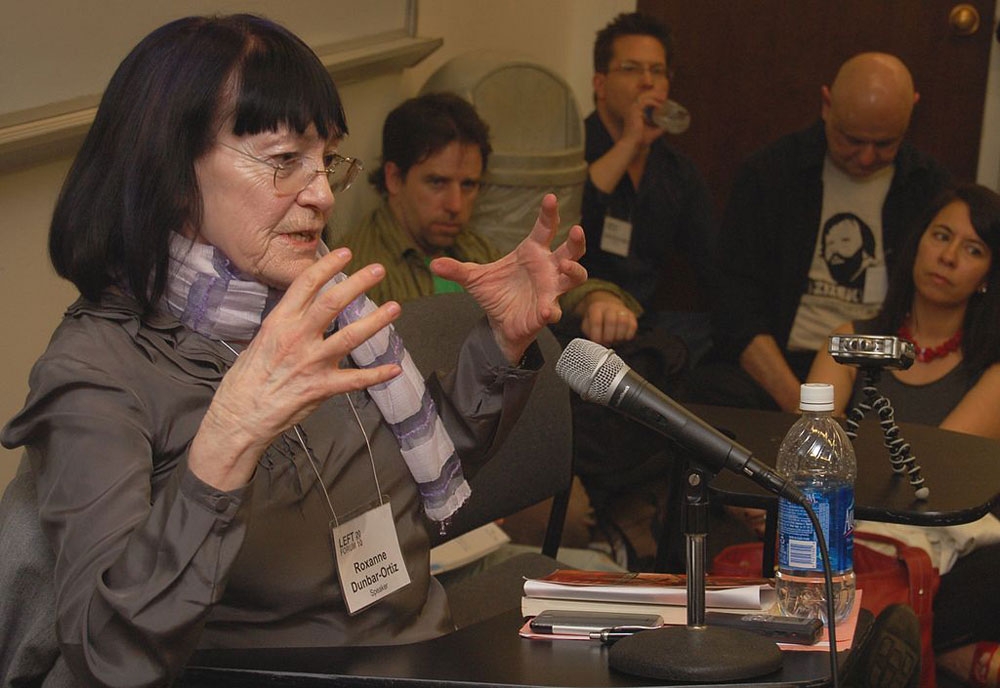
August 4, 2019; Indian Country Today
Ours is a time when some people’s idea of “making America great again” is tied at least in part to keeping immigrants away from our borders. The perpetrator of a mass killing in El Paso, Texas, wrote a manifesto decrying the “invasion” coming from lands to our south, a phrase that echoes some incendiary remarks by President Trump. Now might be a good time to remember that these lands have been “invaded” before.
The recently published adaptation of An Indigenous Peoples’ History of the United States for Young People is an excellent reminder of that fact. As described in coverage by Indian Country Today, the original work is by Roxanne Dunbar-Ortiz, published by Deacon Press a few years ago. That book has been considered groundbreaking because it approaches Native Americans as “territorially and treaty-based people,” not as a racial group that has been oppressed.
The new adaptation, and some comments by one of the writers, help to clarify what this change in focus means. Debbie Reese (Nambé Pueblo) brought her years of work exposing how American Indians are misrepresented in children’s literature to her task of adapting what is an academic work. Her goal, with co-adaptor Jean Mendoza, was to make the work accessible to teens and give them the information they need to understand the truth and use that to disrupt the status quo.
The process of adapting the scholarly work took several years because the co-adaptors worked hard to determine what information in the original was absolutely critical, how to frame it in such a way that it was readable, and honestly cover the violence that occurred as well as the power of the resistance. Finally, they had to keep in mind that Indian teens would read this work, and it had to speak to them with truth and respect.
Sign up for our free newsletters
Subscribe to NPQ's newsletters to have our top stories delivered directly to your inbox.
By signing up, you agree to our privacy policy and terms of use, and to receive messages from NPQ and our partners.
The Indian Country Today article focuses largely on Reese’s goal of making sure that the right stories are being told in the right way, and that young people learn the truth. Her website, American Indians in Children’s Literature, is a wonderful reminder of the stereotypes that have been made to seem like the truth simply by being told over and over again. Not too long ago in NPQ we explored the need to change the narrative about native peoples that white people tell. This history, as originally written and now adapted for young people, is a great reminder of that.
Two reviews from the same website show how the narrative can change. Kirkus published a totally negative review of the original book, accusing it of doing nothing but inducing guilt in non-Indian residents of the United States. Their more recent review of the adaptation says the book provides “an important corrective to conventional narratives of our nation’s history.”
As Mendoza says, white people “need to understand that we are living well on stolen land.” A review by Booklist, a publication of the American Library Association, praises the book not only as essential reading for young people, but for its courageous questioning of terms like “settler,” and “civilization.” The review mentions quotes from American presidents in the past that leave no doubt as to their violent intentions.
In those cases, the violence was directed at the people who were already on these lands, before the Europeans “discovered” them. Now, the violence in action and rhetoric is directed against people who seek a new life here. Let us use the publication of this adaptation of An Indigenous People’s History of the United States as the occasion to remember that we can do better.—Rob Meiksins













